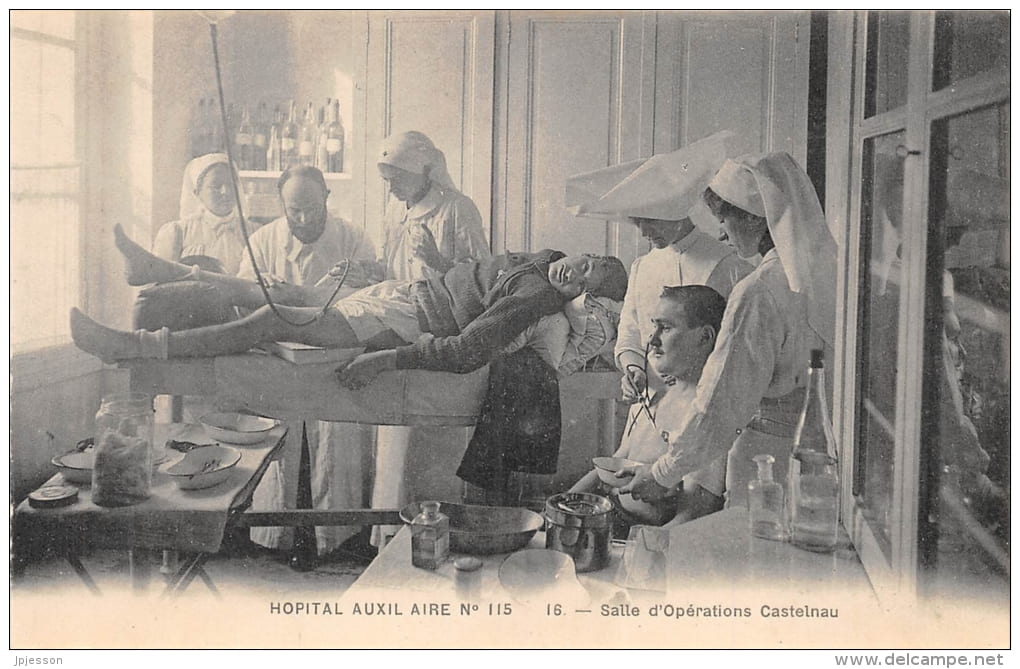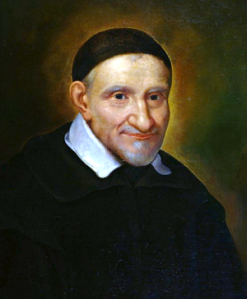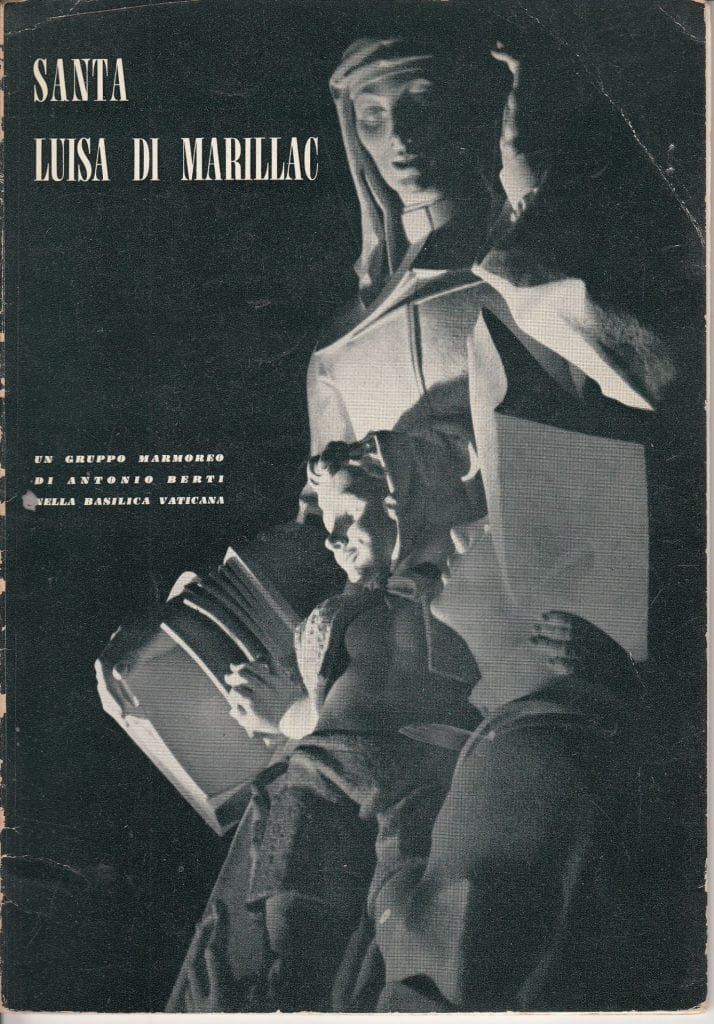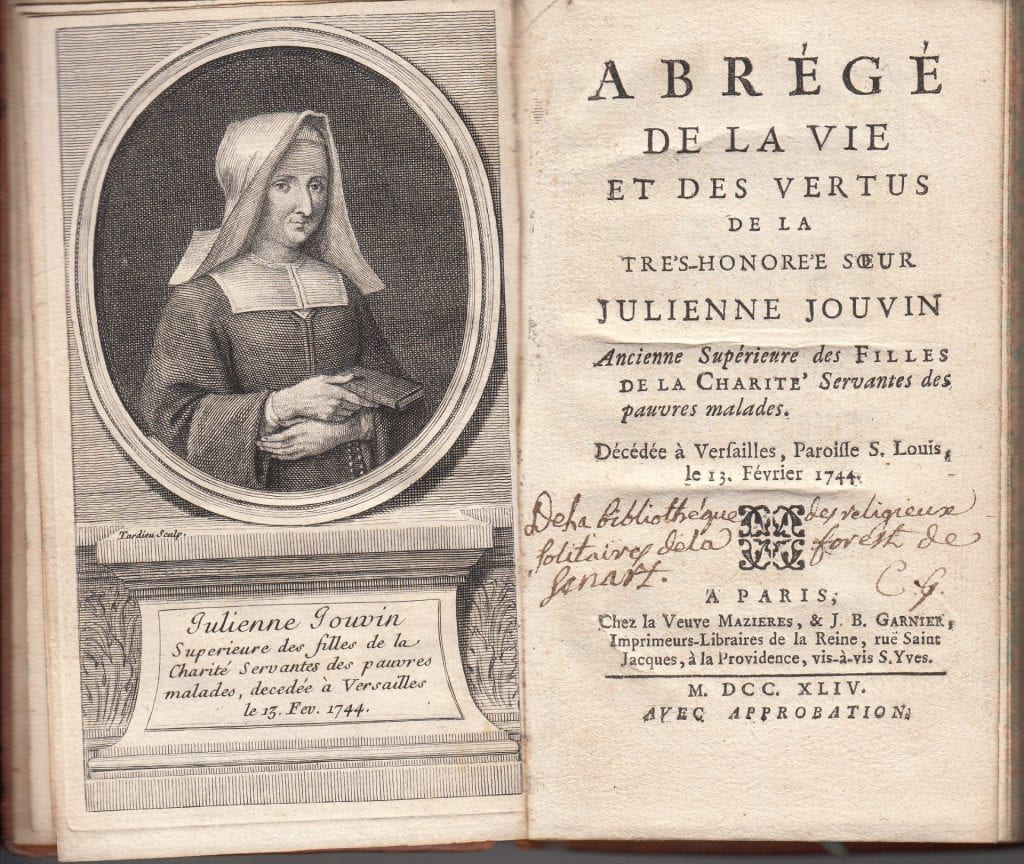This postcard was part of a recent acquisition by the Vincentiana collection at DePaul University’s Archives and Special Collections. At the separation of Church and State in France at the beginning of the 20th century the Daughters of Charity and other nursing sisters were largely expelled from their hospital work. Ten years later when World War I broke out and the French military hospital system was overwhelmed by a deluge of casualties the sisters were welcomed back to work at newly-formed hopitaux auxiliaires sponsored by women’s division of the French Red Cross. Many of these hospitals were set up in commandeered schools, convents, mansions and other institutions. It is estimated that there were more than 900 French military hospitals set up on an emergency basis during the war. This card pictures a Daughter of Charity working in surgery at Hopital Auxiliaire #115 located in La Raincy outside of Paris.
Newsnote: “Vincentiana Purchase of the Week” World War I Propaganda postcard
“The Germans do not respect the dead, the dying, or ambulances.”
This French postcard produced in 1914, already indicates the tone of bitterness and revulsion for the Germans that was produced by the French propaganda efforts.
This card was recently purchased for the Vincentiana collection at Archives and Special Collections at DePaul University in Chicago.
ST. VINCENT AND INTERFAITH
Saint Vincent de Paul was born on April 24th, 1581 in a village in Gascony, France. Saint Vincent was a French priest of the Catholic Church who was famous for dedicating his life to help the poor. He founded the Congregation of the Mission in 1625, which are also known as Vincentian. They are a group of followers of the Vincentian mission who dedicate their lives, much like St. Vincent de Paul, to the service of others who are in the dire need. Based on the fundamentals of the Vincentian mission DePaul University strives to form an appreciation and understanding of the modes to higher education in culture, society, religion, moral values, and service.
Saint Vincent also elaborated that it is important for us to create a whole family of God, or a community. A community that is even diverse to come to gather to work for the greater good. It’s our mission to create a community who dedicates themselves in the servitude of helping those who are less fortunate. This entails, creating a community of diversity even in the aspects of religion.
Interfaith Scholars are students who join together from various religious backgrounds to perform, and educate the four ways of Dialogue. It is our duty as Interfaith Scholars to encourage discussions, between people and groups of various religious beliefs. We strive to create a safe environment to discuss the diversity within our perspective through events like Interreligious Celebrations, Retreats, and Movie Nights.
Our goal is to raise tolerance and awareness of varying spiritual traditions. We want to form a culture for DePaul that provides openness to religion, spirituality, and philosophical background. We provide service to the general body of students who may lack the key dialogue that unites us all as people.
How the Interfaith mission relates to St. Vincent’s ideals of creating a community, all of whom are the family of God in Vincent’s eyes, from all different ethnic, cultural, religious, economical and racial backgrounds. We are striving to share with our community the knowledge and education to form this diverse community. Vincent’s philosophy and ideas helps us as people to understand that we are different and a like in many ways beyond and within our spiritual ideals. We follow in St. Vincent’s footsteps in creating a more accepting and giving community
– Melanie Kulatilake
A Student Responds to Ferguson
In the wake of the recent grand jury decision in Ferguson and prior to the Eric Garner verdict, we asked some DePaul UMIN student leaders to share their views. Sankofa Coordinator and MOVE President Edward Ward shares his perspective in the following piece. We invite you to join the conversation.
Power Concedes Nothing Without Demand
I can’t help but feel concern and disappointment at the backlash the protesters and looters are receiving in Ferguson. I often hear people say that those who feel oppressed should peacefully protest. The truth is that if the oppressed adhere to the notion of peaceful protest, they are well on their way to being further oppressed. To peacefully protest would be to protest under the terms and conditions of the oppressor. Before the verdict, those in Ferguson marched around the town parroting recitations of the phrase “No Justice, No Peace” The verdict reached by the grand jury proved that justice would not prevail, thus leaving those in the town of Ferguson to deny its residents peace. They’ve sent shockwaves across the nation. Although looting occurred in the town of Ferguson I didn’t think they were breaking the law. The law was created to uphold the will of the people, however, when you look at cases like Michael Brown, Trayvon Martin, Oscar Grant, Eric Garner and many more, you find that instead of the law upholding the will of the people it has killed the people, therefore making the law itself illegal; leading me to believe that the law has been broken from the very beginning. And you cannot break what was broken from the time of its establishment.
Injustice was sewed into the fabric of America, and those who wear the garments of American liberty wear the garments of injustice. The people of Ferguson have planted the seed of a new revolution. We need reform now more than ever. Many ignore issues of Police brutality against black men by stating “Blacks kill each other every day.” However, they forget that Blacks were systematically divided so that countries of European decent could conquer. Black on Black crime is a result of perpetuated racism. Many don’t understand why the looters looted stores and franchises; the reality is that they’ve fallen victim to corporations like those they’ve destroyed.
“For Private business, prison labor is like a pot of gold. No strikes. No union organizing. No health benefits, unemployment insurance, or workers’ compensation to pay. No language barriers, as in foreign countries. New leviathan prisons are being built on thousands of eerie acres of factories inside the walls. Prisoners do data entry for Chevron, make telephone reservations for TWA, raise hogs, shovel manure, and make circuit boards, limousines, waterbeds, and lingerie for Victoria’s Secret, all at a fraction of the cost of ‘free labor’”(From the book “Are Prisons Obsolete” by Angela Y. Davis, 2003).
Not only was and is police brutality an issue, the very presence of the prison industrial complex says that those in prison are new day slaves. Currently millions of Black men are in prison, and it’s because the system in which we live under profits off of the criminalization of Black Men. Before black men can be criminalized they have to first be dehumanized and demonized so that when they are jailed and/or killed it is justified. The reason Ferguson has proved to be the example which many others need to follow is because they’ve gotten the attention of their oppressors. They understood the one thing it took to get their voices heard; they simply interrupted the status quo.
Edward Ward is a DePaul Senior majoring in Political Science
Newsnote: “Vincentiana Purchase of the Week: Daughters of Charity as W.W. I nurses in France.”
As we enter the great centenary of the World War I anniversaries one of the enduring memories is of epic carnage. The battlefield casualties on all sides of this conflict still stun the mind today. The image of the Daughter of Charity as a battle-field nurse whether in the Crimean War or the American Civil War is an enduring one. However, the greatest involvement of the Daughters of Charity in war nursing was undoubtedly the Great War. Throughout France, and throughout the combatant countries as casualties mounted military hospitals sprang up everywhere hastily thrown together in commandeered schools, orphanages, noble chateaus and other large institutional spaces. In France in particular the sisters who had only a decade before been expelled from French health care at the separation of Church and State were now welcomed back without hesitation. The attached is a 1916 postcard issued by the Societe Francaise de Secours aux Blesses Militaires (the French Red Cross). It had its headquarters at 21, rue Francois 1er (Paris VIII). This card is a scene from the Val de Grace Military Hospital in Paris and captures a haunting moment as a wounded soldier (to the right) is carried by stretcher into the ward, accompanied by the surgeon as the other patients, a lay nurse, and a Daughter of Charity stop for a moment as the scene is captured.
This postcard was recently purchased for the Vincentiana collection at Archives and Special Collections of DePaul University.
The Name Above The Door
What does it mean for DePaul University to live up to the mission and values of its patron: St. Vincent de Paul?
Produced by: The Office of Mission and Values, DePaul University
Hudetz Brothers Productions Editing and Narration: Casey Hudetz Drawings: Max Hudetz
Text: Edward R. Udovic, C.M.,Ph.D.
Additional Assistance: Scott Kelley, Ph.D. and Brian Cicirello
Music: “Arcadia” Kevin MacLeod (incompetech.com) Licensed under Creative Commons: By Attribution 3.0 http://creativecommons.org/licenses/b…
Newsnote: Vincentiana Purchase of the Week 11/26/2014
The Vincentiana Collection at DePaul University’s Archives and Special Collections recently acquired a commemorative magazine dedicated to the creation and installation of the monumental statue of St. Louise de Marillac in the Vatican basilica. The artist was Antonio Berti. The statue filled the last remaining interior statue niche in St. Peter’s. The date of the magazine is 1954.
Help us, O God
In the wake of last night’s grand jury decision in Ferguson, Missouri, Mark Laboe, Associate Vice President of Student Affairs, wrote a prayer to share with our community:
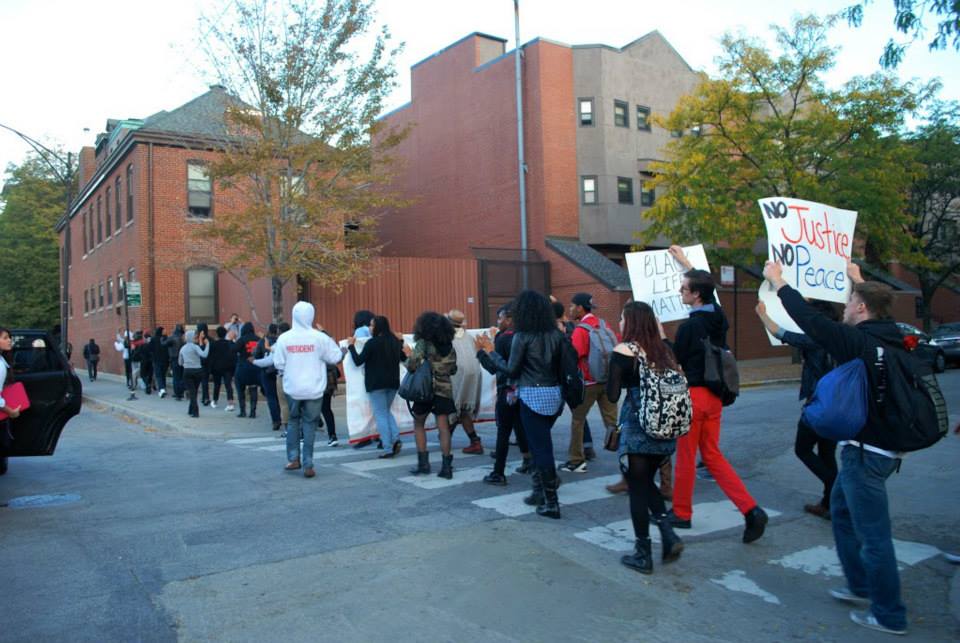
Merciful God,
Come! Help us!
We always seem to get it wrong,
and again, today, we need your help.
Over and over it seems that
we fall short
and manage to be blinded and driven
by our fear, our pride, and our self-centeredness
despite our best efforts and good intentions.
And so,
we harm each other
and end up putting further obstacles in the way
of the justice and peace you desire –
and we desire, in the end –
and which you have gifted to us,
if we would only recognize it
and enact it.
Help us to settle for nothing less
than the goodness,
mercy,
generosity
and service
which you help us to imagine
and which you model for us.
Help us, O God,
to remember and to become who we are
and who you created us to be
as a beloved community.
Newsnote: “Vincentian Research Library Purchase of the Week 11/23/2014”
The Vincentian Research Library of DePaul University has recently acquired a brief biography of Sister Julienne Jouvin (1677-1744) who twice served as Superioress General of the Company of the Daughters of Charity (1724-1730 and 1736-1742). She died in 1744 while serving at the royal parish of St. Louis at Versailles. This is one of the rare biographical studies of pre-revolutionary Daughters of Charity. This volume was published in Paris in 1744.
Unaffiliated Lay Vincentians: Trends & Opportunities For The Vincentian Family
How do young adults fit within the larger Vincentian Family? In 2013, DePaul’s Office of Mission & Values (OMV) commissioned a survey of “unaffiliated lay Vincentians,” young adults, ages 18-35, who have had a formative experience in the Vincentian mission either as a student or post-graduate volunteer at a Vincentian institution. Dr. Scott Kelley, assistant vice president for Vincentian Scholarship for OMV, shares the survey’s results & what they mean for the larger Vincentian Family.
